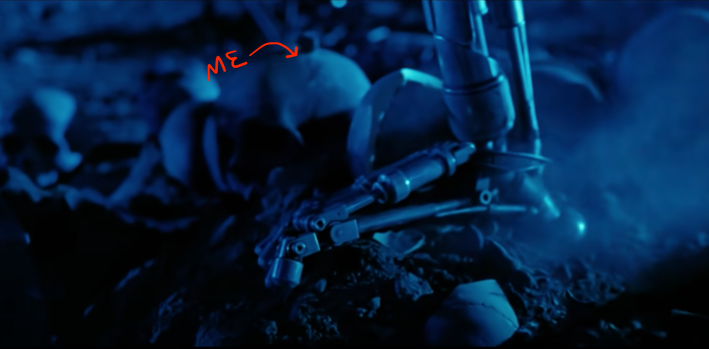Nuclear fusion: It's what's next! That's what all the plasma scientists say, anyway. Whether it be via the hohlraums and many lasers of inertial confinement fusion or via the supercooled superconductors of magnetic confinement fusion, sooner or later by-God nuclear fusion is coming to a maximally secured facility near you. On balance this is probably a good idea, as energy-positive commercial fusion reactors potentially solve humankind's fossil fuel problem forever, and buy our species a few more generations of fun in the sun before Elon Musk gets owned online one too many times and decides mid-tantrum to detonate our planet from space. Won't that be a bummer.
That the overall fusion project is a good and wise undertaking does not mean that each individual advancement in fusion technology is a super-great idea. Here is one example. According to a paper published this week in the journal Nature, scientists at London-based lab DeepMind have taught a reinforcement learning artificial intelligence (AI) to shape and manipulate blobs of burning plasma inside a tokamak reactor. The problem, as they see it, is that optimizing the "stability, confinement, and energy exhaust" of a magnetically-suspended cloud of hydrogen isotopes burning at 10 times the temperature of the hottest part of the Sun is a "time-varying, non-linear, multivariate control problem" of enormous, dizzying complexity.
In magnetic confinement fusion, you see, a cocktail of hydrogen isotopes is sprayed into a hollow metal donut called a torus, where it is suspended by a configuration of magnets supercooled to deep space temperatures. Voltages and coil currents and other science things are used to whip up and ignite and energize this hydrogen cloud into a terrifying frenzy; conditions inside the ignited cloud, called a plasma, become so unfathomably fierce that atoms begin to fuse together and form heavier atoms, blasting off subatomic particles and generating temperatures not found anywhere in our solar system. This astonishing heat triggers more fusion, and the reaction becomes self-sustaining. In a commercial reactor, the other thing the heat will do—which I will admit is somewhat boring—is it will boil some water. Steam from the water will rise and spin a turbine. Kinetic energy from the spinning turbine will drive a generator, and the generator quite literally will go brrrrrrr and make electricity, which will then be used to power your electric shaver, as you stare dead-eyed and defeated into your bathroom mirror at the beginning of yet another miserable day of existence.
What scientists are hunting, in order to make commercial fusion energy a planet-saving reality, is a self-sustaining plasma reaction that spits out more electricity than it consumes in its operations. They've fined-tuned the hydrogen fuel, fine-tuned the shape of the torus, fine-tuned the thermal insulation, and fine-tuned the big honkin' magnets used to contain and energize the plasma, but optimizing the reaction means wielding invisible magnetic fields with incredible precision and delicacy, in order to shape and manipulate blazing star juice, inside the core of a gigantic reactor. Not as simple as it sounds! These are not big red ACME-branded horseshoe magnets with helpful little lightning bolt-shaped lines emanating from their ends, indicating the direction and strength of the magnetic forces. A human with their hands on the joysticks of this sucker would be controlling several of the most powerful forces in the observable universe. No pressure.
As humankind has not yet initiated the Butlerian Jihad, it is considered sound and fine to solve this challenge by handing the awesome, unfathomable responsibility of dominion over A Cloud Of God to computers, expressly because they are able to metabolize information and process variables and generate conclusions in ways and at speeds that our squishy little brains cannot. However, it seems like the pros and cons of this are something we ought to discuss, like, as a species, before we hand over precision control of jillion-degree plasma to The Singularity. I'm not sure I want a deep-learning algorithm to have hands-on experience manipulating a substance hot enough to quite literally burn The Sun. I can barely handle my damn coffee maker!

It's not so much the possibility of being blasted to smithereens by a bloodthirsty, extermination-minded cyborg that bothers me (quite the opposite, in fact), so much as it is the increasing likelihood that the master-appliance relationship I currently enjoy with my smartphone will very soon be turned on its head, once we've finished training computers how to build and mass-manufacture plasma cannons. Let's at least get together and talk this over.
H/t Rory






